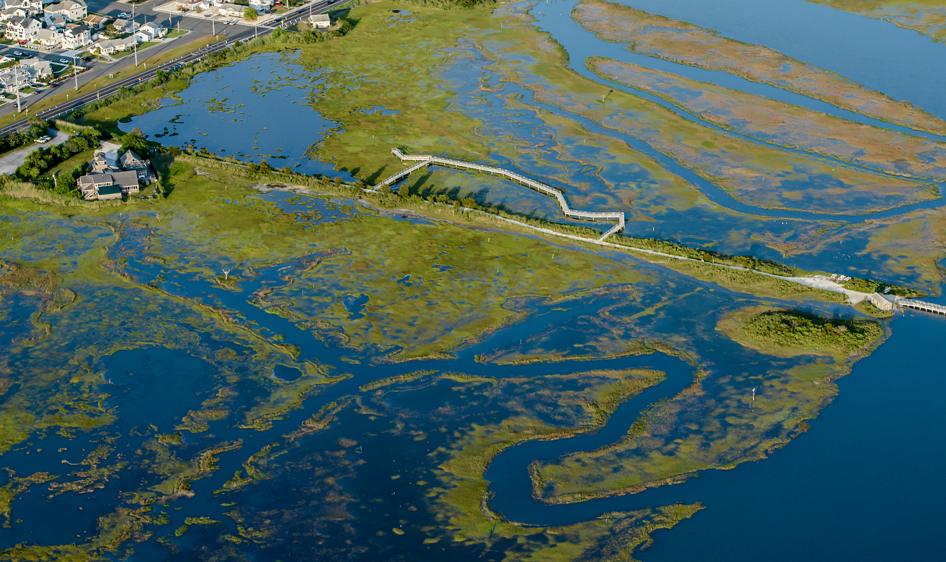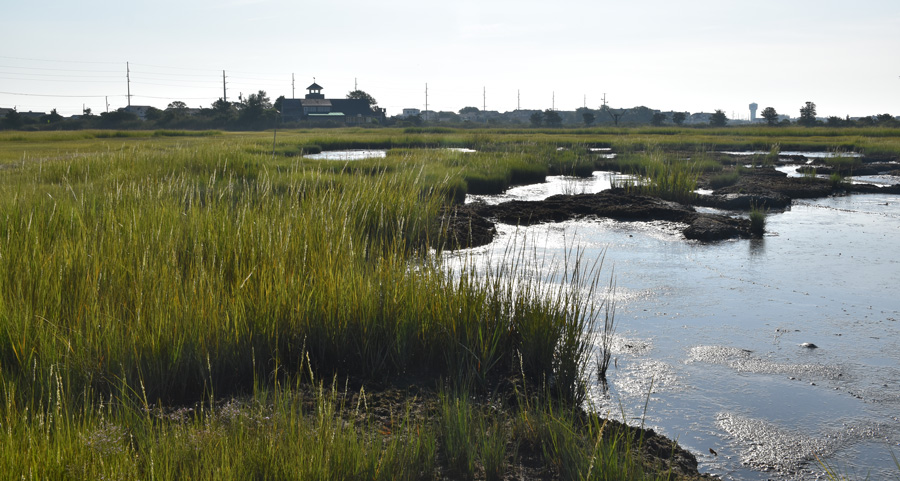by Dr. Lenore Tedesco, Executive Director
Tidal marshes are the foundation of a complex web that sustains the coastal way of life. Whether by providing food, shelter, and home to the myriad of life that rely on them; protecting our communities from storms; or connecting us to nature through their calming and majestic presence, our marshes are critical.
It is well-established fact: sea level in our area is rising – and doing so too fast to maintain healthy marshes, shifting the delicate balance between our marshes and the life-sustaining tidal waters they need. Our work has shown that the marshes at The Wetlands Institute are drowning, and they are crying for help.

“Sunny day” flooding of the marshes at the Institute. Frequent flooding is drowning marshes, converting areas of marsh to mudflats and open water.
Our analysis of historical photographs shows that in the past 60 years we have lost more than one-third of the marsh acreage out our window. Even with moderate reductions in the greenhouse gases responsible for accelerating sea level rise, our modeling work still projects that we will lose another third by 2050. But what if we could change this?
The projects of the Seven Mile Island Innovation Lab (SMIIL) are helping marshes in our communities add elevation to keep up with rising seas and remain healthy. So far, this work has already restored more than 85 acres of marsh. Using tools we helped develop, New Jersey has become a national leader in marsh restoration. Now we are turning our attention to saving the marshes at The Wetlands Institute.

Area of previously lush marsh converted to mudflats and open water pools.
The Scotch Bonnet Island Marsh Restoration Project will restore up to 12 acres of drowning marsh by raising the marsh surface to higher elevation. Our partners at the US Army Corps will pump clean sand and mud from maintenance dredging of the NJ Intracoastal Waterway onto the marsh just west of the Institute. We have diligently planned this project, and brought our extensive expertise to the design. Work will be done during times of low wildlife usage to minimize disturbance and impact. We expect marsh grasses to recolonize the placed sediment by the second growing season following the restoration work, but with a marsh surface that is higher and within healthy elevation relative to sea level – ensuring these marshes are here for generations to come. It’s in our nature to respond – and we are!
Did you know?
Tidal marshes:
- Support more than 75% of commercial and recreational fish caught in this country
- Absorb flood waters and wave energy from storms, decreasing property damage in adjacent communities
- Store carbon at a rate 10 times higher than a tropical forest, helping to moderate climate change
